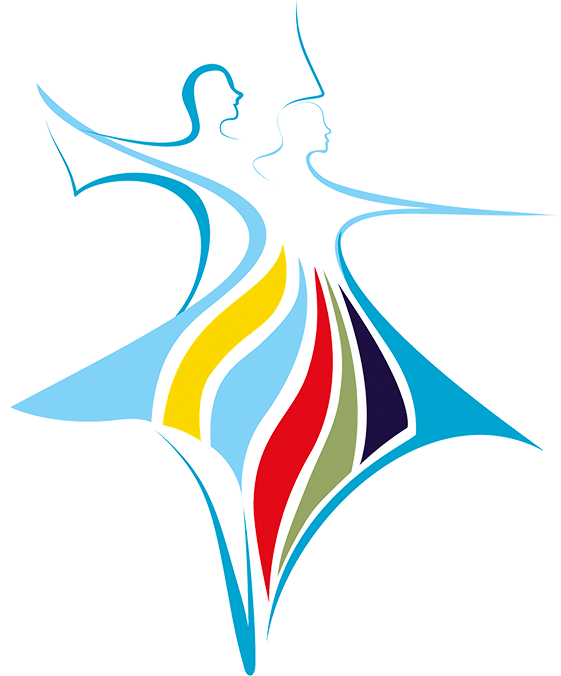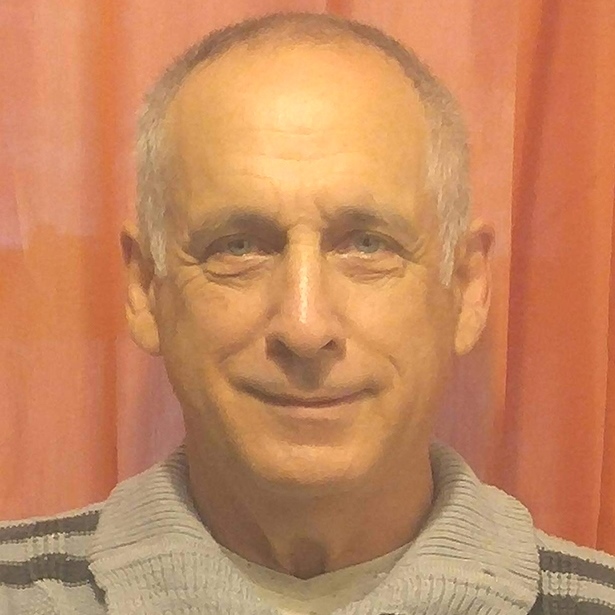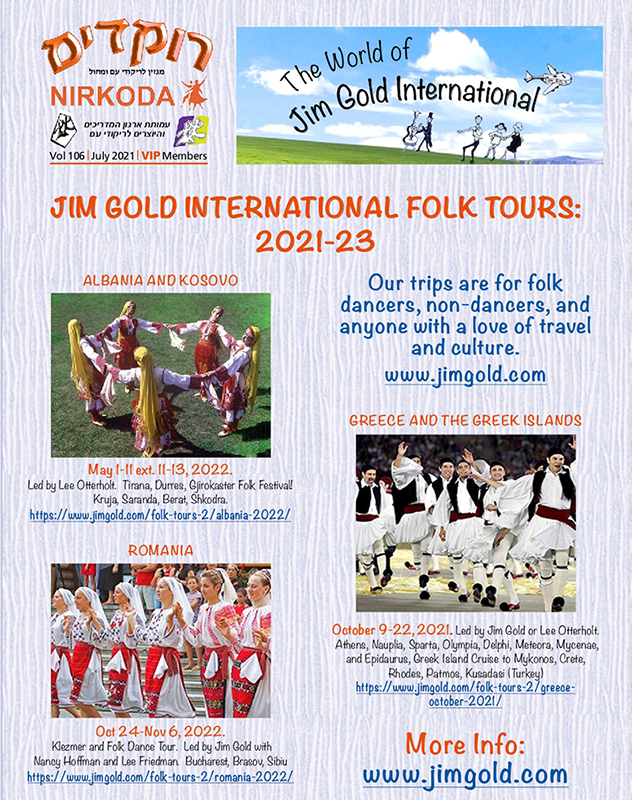- Home
- Rokdim Nirkoda 106
- Dancing Israeliness
Dancing Israeliness
Michael Mero in a conversation with Yaniv Hoffman
- Translation: Ruth Goodman
- Translation: Tzipi Shragai
Hello Yaniv Hoffman. Is it true to say that you were born into the dance world?
Yes, I was born to dance. I was born to a dancer and choreographer mother and an accordionist father. They worked with the Hora Yerushalayim dance troupe and became the directors of the troupe and of Beit Hamusica in Jerusalem. My mother was in charge of dance in Jerusalem. In 1988, they fulfilled their vision and opened “Mehola”, a large dance school in town. In my childhood years, I danced in “Hora Yerushalayim”. When I grew up, I transferred to dance in “Mehola”. From the age of 18, I have worked, danced, taught and choreographed for “Mehola”. There I also met my wife, Dorit. My sisters Yael and Noa work and dance in “Mehola” and this is the story in brief.
Does this mean that not only you, but the entire family, is centered around dance? Beautiful. Now tell us about the work that you do.
Look, I grew up with Israeli dance, in “Hora Yerushalayim”, to a mother who is an Israeli dance priestess. But “Hora Yerushalayim” has always been considered a dance troupe with a high level of technique. It is also the “cushion” on which my mother grew up. She always appreciated and worshiped Yonatan Karmon, who was the first to introduce a lot of technique to Israeli dance for the stage. That’s what he developed and that was his goal.
When my mother, Shuki Hoffman, opened “Mehola”, she introduced a lot of technique to the classes, including modern dance and classical ballet. Truthfully, this was done in order to excel and not to remain in a somewhat amateurish place, perhaps simpler, and perhaps more for the masses. Yes, also to professionalize the technical capabilities. The moment you become professional, the desires, aspirations and demands of the dancers are raised, both by the dancers and those who teach them. Because once you are educated and knowledgeable about the body, you work very much on the body; so it is not sufficient for you to do just a “mayim step” or “debka step”. You are looking for things that are more innovative, more varied, more difficult, more challenging.
The people working with high-level dancers are, among other things, constantly required to further challenge them. That’s what it seems that my mother felt in those years. She always had the best dance troupes in the country from the aspect of technique. It has been well-known that for years “Mehola” was the leader of the “scene” in the Israeli dance field, and whoever danced in “Mehola” was considered to have a very, very high level of technique.
As Shuki’s children, we continued on that path as we grew up. This includes both me and my wife Dorit, who I met in “Mehola”, as well as my younger sisters, Yael and Noa, and all the other teachers who are dancers who have become choreographers over the years – everyone went through this track of “being a professional dancer”. Therefore, the directions we go in are always filled with lots of modern and contemporary dance.
There is always this affinity, the leap from Israeli dance; I don’t know whether to call it folkloric, because it is not folklore, but Israeli, modern and contemporary dance. Why is it Israeli? For all kinds of reasons. Not just because it contains folk dance steps. It can be the themes, it can be the costumes, it can be the songs and it can be something in the orientation that feels Israeli. First and foremost, it is the very fact that we are Israelis, living as Israelis and feeling Israeli. It can be a dance about the tensions that exist, the terrorist attacks, very “Eretz Yisrael” things, landscapes and trips. So even if it does not follow in a hora step, it is nonetheless born as an Israeli creation.
This is exactly what I want to ask you: What is Israeli dance? What is our folklore, heritage and culture?
At the panel discussion that was held at the Ashdodance Festival this past summer [2019], I was asked if, when I perform abroad with my troupe and my dance, would they know that we are from Israel? Would they feel that it is Israeli? My answer was unequivocally, “yes”. And then there was some objection from people who said something like this: “You don’t create folklore. What you do is not Israeli folklore”. So, I told them, “Okay, this is what you say when you’re in Israel. But, when they see us there, they know that we are Israelis, they know that the dance is Israeli”.
So they asked me: “If you turn the music off and put it on mute, will they still know that the dance is Israeli”? Listen, it’s like with any other nation. If you eliminate the music and take off the costumes, I also don’t know if you would know which nation it comes from. Obviously the whole set of components is important, but yes there is something Israeli about me. I can say that with all that is contemporary, relative to this genre – and I am considered to be very contemporary – there is still always a connection to the subject. For example, the dance that won at the Karmiel Festival with four dance awards is called, “El Ir Avanim – To A City Of Stones”.
The dance tells about Jerusalem. I grew up in Jerusalem at the time of terrorist attacks and tension, between holy and mundane, between powerful and eternal to the daily grind. The dance is built the same way. The dance is not folklore; it has drumming, lifts and leaps. These are things that are more technically advanced. Together with this, it has won all the prizes and it felt like an Israeli dance to the extent that they chose it for the torch lighting ceremony on Mount Herzl. It was in 2002 or thereabouts. I’m trying to say that the subjects I choose to do, e.g., a dance about Jerusalem and its daily life, what’s more Israeli than that? If someone claims it is not Israeli dance because it is not folklore, there is a problem with the thesis, with this approach. Did I answer your question? Or didn’t I?
I just want to hear your position because it is very interesting. You are actually saying that “what I experience here is my Israeliness“.
True, you said it nicely. Add to it one’s self. We are the generation that made a transition from “collective” to “me”. Shlomo Artzi said this, but I really like it. With the songs he grew up on, it was always about “Them” in the beginning, and after that, “We”. Now the generation says “I and I”: I feel, I write, I speak.
It’s the same in dance. It’s okay, you don’t have to resist it. If we take the hora dances of yesteryear, then there was one of “Us”. Circles and hands and lines and everything is very collective; there is almost no individuality at all. In contemporary dance, which is also international, not only ours, there is a lot of individuality. The themes have become personal as well; it’s between him and her, him and him, her and her, it makes no difference. These are matters of emotions, of feelings, of things that came from the modern dance world, no doubt. Add to this the Israeli sound and song.
For example, this year I did a show called “Orientatzia”. It is a show that takes contemporary dance choreographed to oriental music. As soon as you take oriental music, it probably changes how you build the dance. It directs you in a certain way. I wanted to make a connection, not go to the authentic ethnic place. I wanted to create contemporary dance with oriental music and it came out very, very interesting.
The show was so successful at the Ashdodance Festival that they had already invited it to more theaters. So if it succeeds, then there’s an indication here that it has an audience and that it might also be good. This is also something that has come up in the panel in Ashdod. Someone said, “Are we deceiving the audience when we say it’s a folkloric dance”? I never called it a folkloric dance troupe, on the contrary. I don’t want to be there because I don’t like templates and I don’t like characterizations. I am Lehakat “Mehola”. Lehakat “Mehola” performs Israeli contemporary dance. Within this, I always, out of my respect for folklore, also interweave ethnic, authentic or folkloristic works. The “Orientatzia” show, for example, had some four reconstructions of ethnic works, including one that my mother did in 1980. Calculate it, it’s been about forty years. I always give respect to the restorations as well; we have a lot of respect for the restorations.
You clarify your position in an interesting way. You are born into a certain reality. When you started at Hora Yerushalayim, you started with the familiar folk dances and today you say something has happened to us in society and it’s very interesting. We’ve moved from “I am in a collective” to “I am”. How do you feel about that? Do you long for what you did in past years, for what you grew up with in the past?
First of all, I’m a person who very much values nostalgia. I’m a collector. I keep all my albums, photos and videos and I upload a lot of memories on Facebook. I have albums from all the years. Not everyone is so sentimental about their history and their private and non-private past. I am the one who safeguards everything for my parents. My mom always asks me about when an event took place and I always know what to tell her. I place a lot of value on the past and on history.
At the same time, I am a person who is very much inclined to move forward and not stagnate. I keep thinking ahead about how to renew, flow with progress. That is to say, I look at it in the opposite way of what had been said in the panel discussion.
If an excellent troupe like Mehola manages to preserve folklore works at a very high level of performance, it is actually flattering to folklore and makes people who appreciate “Mehola” for its being contemporary, be exposed to folklore; not to be considered archaic. Many times, the young audience who watches folklore troupes or attends folklore discussions, as it was at the Ashdodance panel, tells me: “What is this boring thing? Come on, let’s move forward”. That’s how they look at it. When they watch a show of “Mehola” they don’t look at it that way.
That precisely is the victory. To bring in the folklore, and to make it accessible to the young folks. This is because it is accessed at a very, very high level. Do not keep it as it was in the past, but rather, make it attractive and contemporary for today. To me, that’s exactly the task. If all kinds of people who are trying to revive folklore would understand this issue which was also discussed on the panel: “Let’s help us revive”. First of all, why the need to revive? If it needs to be revived, it is a sign that it is dead. And if it dies, one must try to understand why it died. It may be that the way to revive it is the one that kills it.
I want to quote to you things that Yigal Alon said: “If a people is not knowledgeable about its past, its present is shallow and its future is unclear“. What you are saying is that you are utilizing the past.
I’m totally there. I think I very, very much preserve the past and respect the past. I just find attractive ways to bring it to the younger generation so that they want to be there as well. I don’t want to force them to be there. I want them to want to be there. “Mehola” is a large network of dance schools operating in four cities. There are several hundred students in each city. Each year there are about 2,000 students in the network. For us, Israeli dance is a must. This is in contrast to other places where only those who are registered in an Israeli dance troupe dance Israeli dance.
In Lehakat “Mehola”, students are committed to folklore. Every student who enrolls in Mehola also learns Israeli dance, folklore, and there is always a niche for the hora and hora style dances. They learn it together with classical ballet technique, modern dance technique and hip-hop technique. This makes them very versatile dancers and dancers who learn to love Israeli folklore. This is about a large mass of young dancers and not about some thirty dancers, let’s say it humorously, who chose to study Israeli folklore. To me that is the achievement. So it’s true that we don’t have one distinct folklore troupe that does only folklore, but to me, we get it from somewhere else and with much greater value.
Yaniv Hoffman, would you agree with the concluding sentence: “I preserve the past but also build the future?”
Great, you said it great. I’ll conclude that just last year I did a huge production called “Rokdim Shuki”. I took all my mother’s forty years of creations, brought together all the past and present dancers of “Mehola”, including “Hora” graduates, and restored our sixteen best works. It was a celebration to work on these dances and to perform them in large halls at the Karmiel Cultural Hall, the Smolarz Theater [Smolarz Auditorium] and the Performing Arts Hall in Herzliya. There were hundreds of people who came to watch the show and it went on YouTube and was documented in videos. If this is not conservation, then what is? Forty years of high quality Israeli folklore creation, on a high technical level. We worked hard on it. I took all my modern dancers, “Mehola” dancers of today and for an entire year, they all danced only Israeli folklore out of respect for “Rokdim Shuki”. That’s exactly it. I have no doubt that I respect the past but constantly connect it to the future generation.
Yaniv Hoffman – What I wish for you is to dance, rejoice and do good for yourself and for others.









Comments
התראות